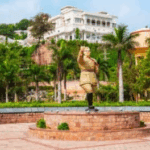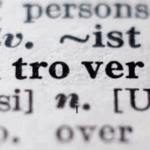
The Disappearance of Netaji Subhas Chandra Bose: A Historical Mystery

Netaji Subhas Chandra Bose (1897–1945) was a charismatic leader in India’s freedom struggle. Born into a prominent Bengali family, he topped the Indian Civil Service exams but quit to join the nationalist movement. Bose became Congress president in 1938 and later broke with the party over strategy. He formed the Azad Hind government and led the Indian National Army (INA) – a 20,000-strong force of Indian POWs allied with Japan – to fight the British by military means. His famous call “Give me blood, and I shall give you freedom” captured the imagination of many Indians. Bose’s bold defiance of British rule made him a hero to millions.
Official Account: Plane Crash in Taiwan (1945)
In August 1945, with World War II ending, Bose boarded a Japanese bomber at Taihoku airport (modern-day Taipei, Taiwan) to travel from Tokyo. Officially, the plane crashed on takeoff on 18 August 1945. General Tsunamasa Shidei (a Japanese officer) and the pilot were killed instantly; Bose was badly burned and rushed to Nanmon Army Hospital. He reportedly died of third-degree burn injuries that evening – the official date of his death is given as 18 August 1945. His ashes were sent to the Renkōji Temple in Tokyo for enshrinement.
From the start, however, supporters in India were uneasy. Eyewitnesses later gave conflicting details, and no independent proof of his death was ever produced. As one history source notes, “many among Bose’s supporters refused to believe either the fact or the circumstances of his death”. In the weeks following the crash, rumors and questions swirled: Bose had no photo of his remains, and burned bodies in the wreckage were never positively identified. These uncertainties immediately opened the door to speculation about his fate.
Alternate Theories of Bose’s Fate
- Escape to the Soviet Union: Some believe Bose escaped the crash and was secretly taken to the USSR. The Mukherjee Commission (2005) itself found that available accounts of the crash “could not be relied upon” and noted evidence of a “secret plan to ensure Bose’s safe passage to the USSR”. Decades earlier, Congress politician S.N. Sinha testified that he had learned Bose was imprisoned in Yakutsk, Siberia, where hundreds of thousands perished in Stalin’s camps. In other words, a popular story is that Bose died in a Soviet gulag after 1945.
- Life in India (the “Gumnami Baba” theory): Another theory is that Bose returned covertly to India and lived out his life as a mysterious ascetic called Gumnami Baba (reclusive holy man) in Uttar Pradesh. This idea found some support among admirers who claimed to have seen a resemblance. However, official inquiries cast doubt: the Mukherjee Commission reported that the ashes at Renkōji actually belonged to a Japanese soldier and that DNA tests showed “Gumnami Baba” was not Bose. To date, the identity of Gumnami Baba remains unresolved, but most investigations have rejected the claim that he was Netaji.
- Other accounts: Over the years, various other versions have circulated. For example, a recently declassified 1947 French intelligence report made no mention of Bose’s death; it simply noted that his whereabouts were unknown at that time. Some even claim covert UK operations (using a Japanese soldier’s body) or suggest he faked the crash. None of these stories has conclusive proof, but they show how persistent the mystery is.
Key Investigations and Reports
- 1956: Shah Nawaz Committee: Appointed by Prime Minister Nehru, this panel was chaired by Bose’s old associate Shah Nawaz Khan. After interviewing witnesses in India, Japan, and elsewhere, it concluded that Bose had indeed died from burn injuries in the Taihoku crash.
- 1970: Justice G.D. Khosla Commission: This inquiry (led by Judge Khosla) reaffirmed the earlier finding. It stated there was “no scope for doubt” that Bose had burned to death in the Formosa (Taiwan) crash on 18 August 1945.
- 2005: Justice M.K. Mukherjee Commission: In contrast, this three-member panel unexpectedly rejected the crash story. It pointed out contradictions in eyewitness accounts and suggested Bose might have survived. The commission spoke of a “secret plan” for his escape. It even ordered DNA tests and determined that the remains at Tokyo’s Renkoji Temple were of a Japanese soldier, not Bose. The commission concluded Bose had died later of natural causes. However, the Indian government did not accept this report. (In a follow-up, a Japanese government report declassified in 2016 reiterated that Bose died in the 1945 crash from a mechanical failure, but that finding is not universally accepted.)
Cultural and Political Impact
Statue of Subhas Chandra Bose in Kolkata’s Esplanade, India. Bose’s image and legacy are honored in many public memorials. His disappearance remains deeply embedded in India’s national story. As one analysis put it, his fate “continues to be among India’s single biggest unresolved political mysteries”. For decades, every prime minister has inherited this sensitive question, and top-secret files on Bose were only opened to public scrutiny in the 2010s.
Bose’s legend carries strong emotional weight. His family and followers have long insisted there is a cover-up; for example, they note that no photograph of Bose’s burned body was ever shown to them. Politicians have also made him a rallying point. In Bengal, the state government even campaigned to honor him as the “Leader of the Nation” on his birthday, and both major parties now claim his legacy as a Bengali icon.
In popular culture, Bose’s story is retold in films, books, and songs. Indians observe his 23 January birth anniversary and 18 August death anniversary with patriotic tributes. Monuments like the Kolkata statue remind people of his daring spirit. In short, Bose’s bold image and unresolved fate continue to inspire devotion and debate in modern India.
The Enduring Mystery
More than 75 years later, the question “What really happened to Netaji?” still sparks intense interest. Partly this is because Bose himself was such a commanding figure: a larger-than-life leader who seemed almost fated to become a legend. Partly it is because the official explanation never provided closure. As noted above, many of Bose’s closest supporters “refused to believe either the fact or the circumstances of his death”. In the absence of definitive proof, every new claim or document reignites hope.
Ultimately, the mystery endures because Netaji’s story straddles myth and history. He is remembered as a hero who fought the British “by any means necessary,” so the idea that he might have survived the war in secret is appealing. Until incontrovertible evidence appears one way or the other, his disappearance will remain a subject of fascination. In that sense, Subhas Chandra Bose’s legacy is immortal: he lives on in India’s collective memory as both a great hero and a great enigma.
Sources: Historical accounts and government reports on Bose’s disappearance (with translations from archives). These include official inquiry commissions, contemporary newspapers, and declassified files.
Hello, I am Aman (: Full Time Traveler :) At the age of 41, in April 2023, fueled by my love for travel and the determination not to remain fixed like a tree, I embarked on a bold journey. Having dedicated 17 years to a corporate job, I chose to transition from a full-time employee to a full-time traveler, driven by the desire to break free from the routine and constraints of a conventional life. Along the way, I not only explored the wonders of travel but also uncovered the transformative power of financial freedom. I realized how it could liberate me to lead a life teeming with adventure, purpose, and fulfillment. Through my blogs, I am passionately sharing my story, aiming to inspire and provide valuable guidance to those, like me, who aspire to weave travel into a life overflowing with limitless possibilities.






















Post Comment
You must be logged in to post a comment.